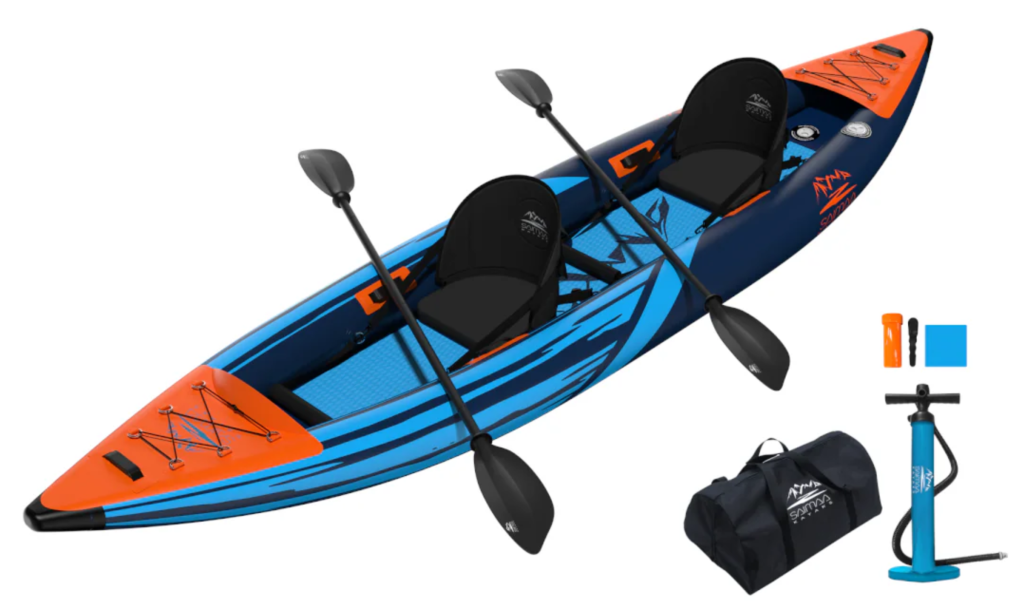Olen jo pitkään halunnut kokeilla vesilintujen kuvaamista vedestä käsin. Jos vesilinnusta haluaa hyvän kuvan, kameran on oltava sekä riittävän lähellä että riittävän alhaalla. Rannalta — ainakaan suomalaisilta järvien rannoilta — ei useinkaan pääse oikeaan paikkaan. Esteenä ovat rantakasvillisuus, kivikot ja jyrkät rannat. Ainoa ratkaisu on siis mennä itse veteen tai sen päälle.
Olen tutkinut lukuisia videoita ja nettisivuja kelluvista piiloista. Ne tuntuvat olevan ammattilaisten suosima ratkaisu vesilintujen kuvaukseen. Valmiit piilot maksavat kuitenkin paljon, ja itse rakennettuna ne vievät runsaasti aikaa. Lisäksi ne sopivat parhaiten mataliin vesiin, joissa käyttäjä ylettyy pohjaan ja pystyy siirtelemään piiloa.
Toinen vaihtoehto on vene, kanootti tai muu vesikulkuneuvo. Viime aikoina erityisesti ilmalla täytettävät kanootit ovat nousseet suosioon monikäyttöisyytensä ansiosta. Ne pakkautuvat kuljetuslaukkuun varsin pieneen tilaan ja ovat nopeasti käyttövalmiita. Minulla ei ole aiempaa kokemusta täytettävistä kanooteista, mutta nyt sellainen on hankittu. Tässä blogissa tulen kertomaan kokemuksia sen käyttämisestä kuvausalustana.
Kuvauskohteita riittää lähiseudullani runsaasti: järviä, lampia ja pienempiä vesistöjä, joissa vesilinnut viihtyvät. Muuttoaikoina lähijärvet täyttyvät lisäksi hetkellisesti muuttolinnuista. Toivon, että tämä uusi näkökulma parantaa vesilintukuvausteni laatua ja tuo samalla ulkoilun ja vesillä liikkumisen kautta lisää hyvää oloa.
In english
I’ve been wanting to try photographing waterfowl from the water for quite some time. To get a truly good shot of a duck or any other waterbird, your camera needs to be both close enough and low enough. Shooting from the shore — at least along the edges of Finnish lakes — rarely puts you in the right spot. Dense vegetation, rocky shores, and steep banks often get in the way. The only real solution is to get into the water or onto it.
I’ve spent hours watching videos and reading about floating hides. They seem to be the tool of choice for many professional wildlife photographers. However, they’re pricey if you buy one ready-made, and building your own takes a lot of time. They’re also best suited for shallow waters, where the photographer can stand and move the hide around.
Another option is a boat, canoe, or some other type of watercraft. Inflatable canoes, in particular, have recently become popular because of their versatility. They pack down surprisingly small, fit neatly into a carrying bag, and are quick to set up. I have no prior experience with inflatables, but I’ve finally taken the plunge and bought one. In this blog, I’ll be sharing my thoughts on using it as a photography platform.
I’m lucky to live in an area full of potential shooting locations — lakes, ponds, and smaller wetlands where waterfowl thrive. During migration season, the local lakes briefly fill with visiting birds, adding even more excitement. I’m hoping this new perspective will improve the quality of my waterfowl photography, while also giving me a healthy dose of fresh air and time on the water.

